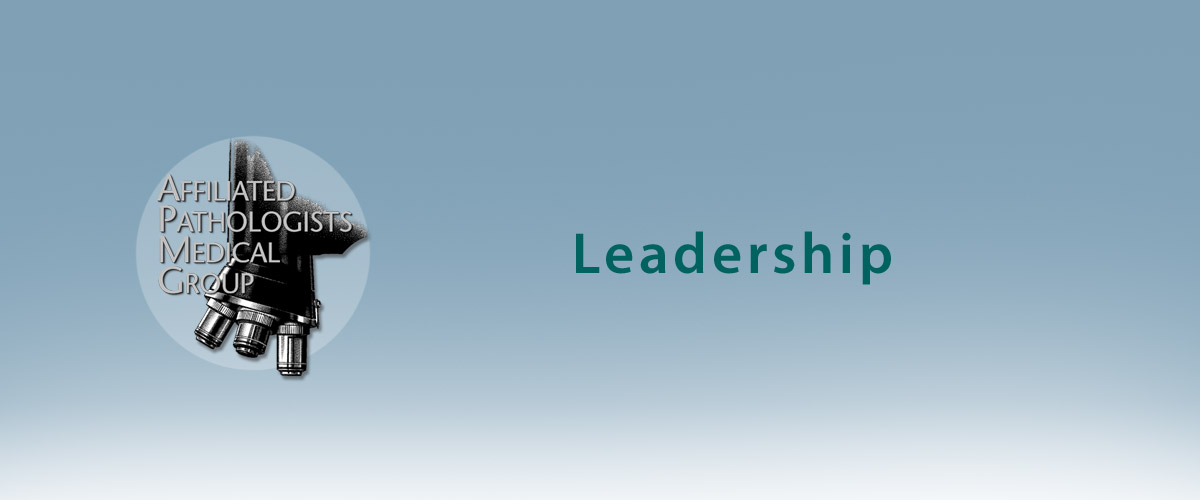Leadership and Experience
Affiliated Pathologists Medical Group has focused for over 25 years on providing leading pathologists, medical directors and pathology consultants to community hospitals and their medical staffs.

New pathologists are mentored from their first day and a formal ongoing mentoring program assures us of constant improvement of both the new and the experienced pathologists. Recently the College of American Pathologists has asked us for a presentation to their CAP Board as an indication of national interest in such model programs. Our involvement in local, state, national, and international pathology organizations has positioned us to stay abreast of new pathology developments and gives us the opportunity to lead several efforts to advance pathology. Many of our commitments to leadership in these efforts have lead to recognition and improvement at several levels. Examples of these efforts in just the last few years include:
- Community access to medical and pathology information through our web site The Doctor’s Doctor, recognized in 2004 by Google as the 4th leading web site on medical information.
- Editorship and authorship through the CAP to a hematology atlas recognized as the best selling publication the CAP has ever introduced.
- Placenta protocols developed for use by several of our hospitals providing the best supportive care for mothers and newborns as well as reducing risk for obstetricians and hospitals.
- Leadership and Chairmanship of the CAP Publications Committee and Curriculum Committee.
- Research and ongoing development with a national workshop on Microwave technology to accelerate specimen processing and turnaround time in surgical pathology.
- Member of the CAP Foundation
- National teaching of a workshop for the American Society of Clinical Pathology on Body Fluids.
- Active participation in teaching for university programs at UCLA, USC, and Irvine Medical Center.
- Active leadership in the California Tumor Tissue Registry
- Regional Commissioner for the College of American Pathologists Laboratory Inspection Program.
- Volunteer CAP Inspectors and Inspection teams from most of our hospitals leading this next year in the new unannounced inspections.
- Presidency of leading pathology organizations such as the American Pathology Foundation and the American Society of Cytopathology and the California Society of Pathologists.
- Officers in the Los Angeles Society of Pathologists and the California Society of Pathologists.
- Active medical staff leadership with several APMG pathologists on medical executive committees, chief of staff, and hospital governing boards.
- Chairmen of medical and board committees in Transfusion Medicine and Infectious disease, Institutional Review Boards, Quality Improvement Boards, Education Committees and many others.
- Active participation and former chairperson on Hospital Foundation Boards
- Community programs on Bioterrorism, Health and Wellness programs, Educational programs on Breast Cancer and Colon Cancer.
- Leaders for digital imaging and informatics for hospitals and their Boards.
- American Society of Pathology workshop on Photography and Imaging as well as awards for photography in anatomic pathology.
It has been our approach to develop a pathology practice pattern where an innovation is quickly incorporated through a best practice approach. All pathologists are connected by immediate internet links, couriers for consultations within the group, image internet transfer, and other technologies to allow us to have an electronic neural network of more than 35 pathologists.


